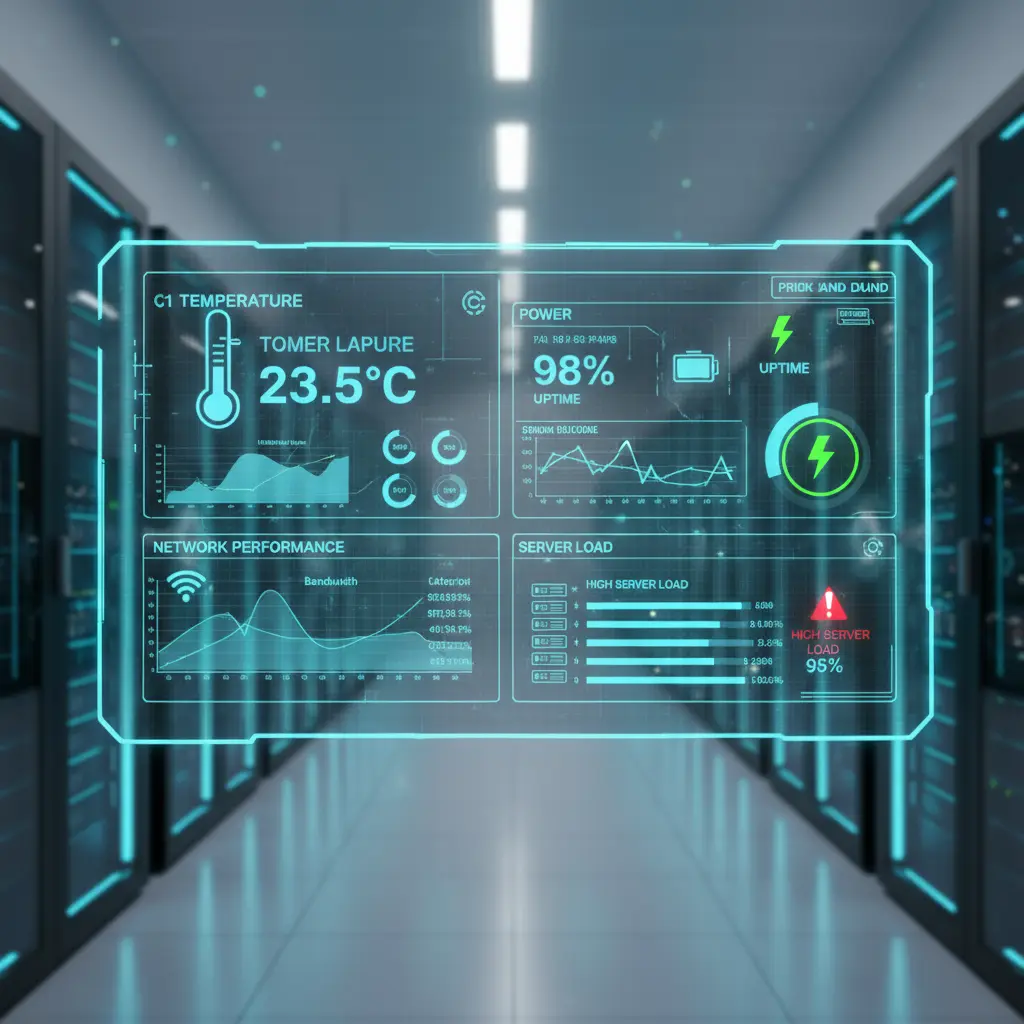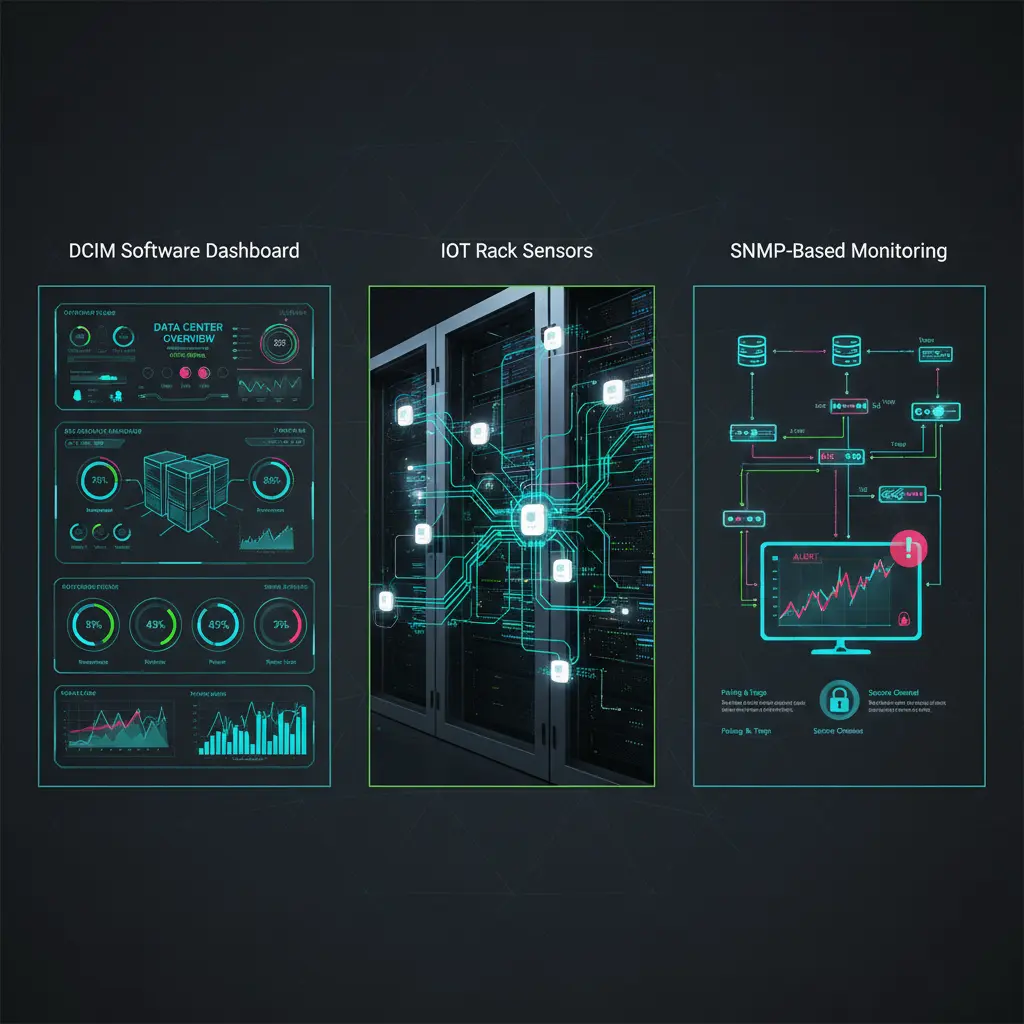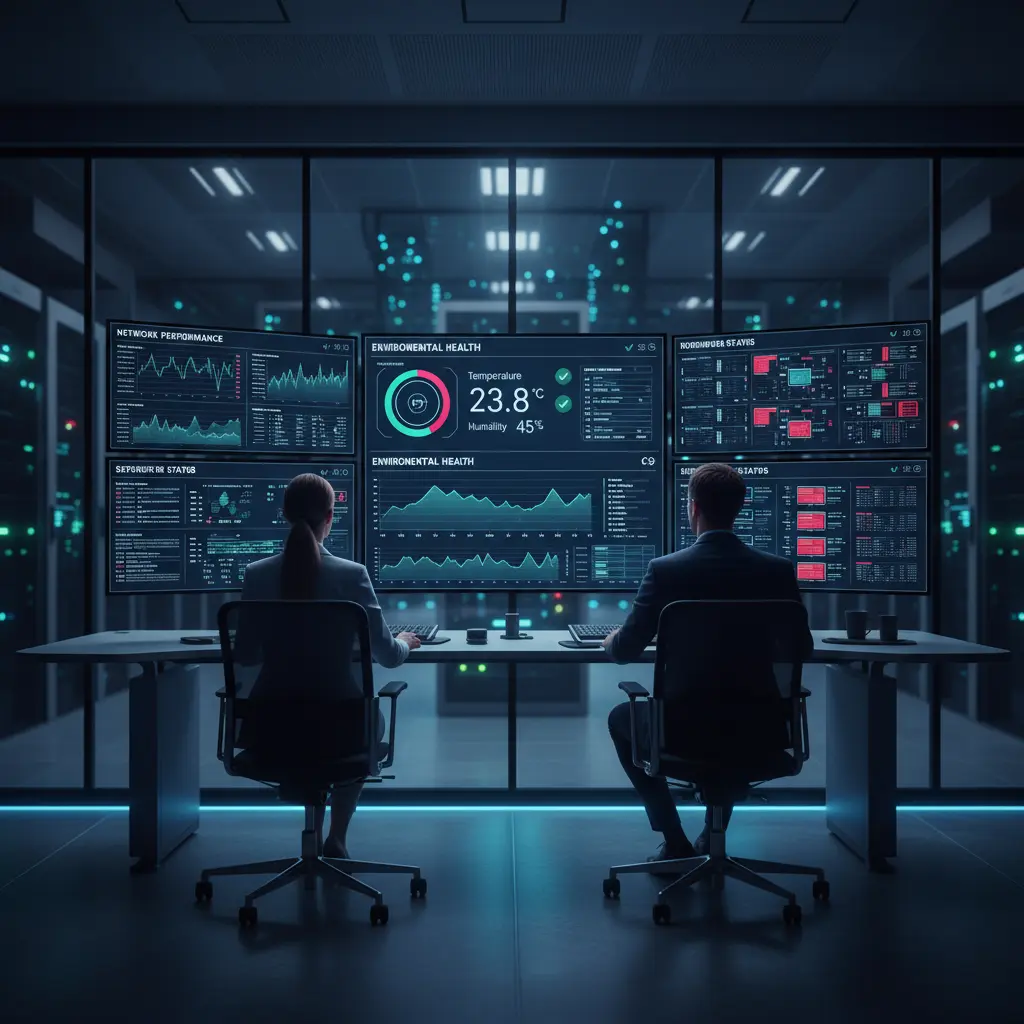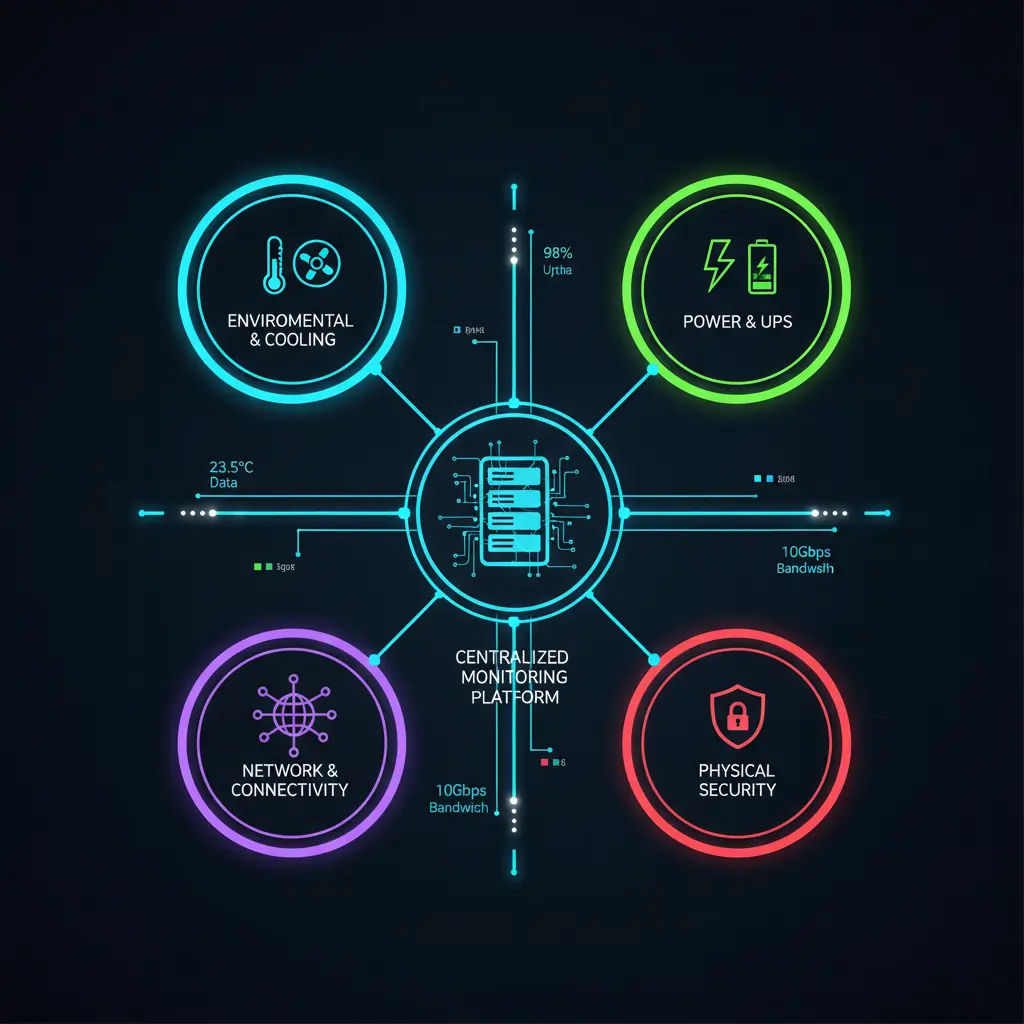Introduction
Data is what makes the modern business work. Behind every client interaction, whether it’s in the financial services, healthcare, or a global SaaS company, there is a data center that quietly keeps everything online. But here’s the catch: you have to keep an eye on complex infrastructure all the time. A power surge, a network bottleneck, or a cooling problem can all cause outages in minutes, costing thousands of dollars per minute.
That’s why a data center monitoring system isn’t a nice-to-have; it’s a must-have. A monitoring system is different from the general idea of “data center monitoring” because it gives you the technology you need to keep an eye on power, cooling, networking, and server health all in one place.
Here is what you’ll learn in this guide:
- What a data center monitoring system is
- Its core components and must-have features
- Different types of systems available today
- Best practices in choosing and implementing the right one
- And how these systems directly impact performance and reliability
Check out our Server Room Temperature Monitoring solution for more information on one of the most important factors (temperature).
What is a Data Center Monitoring System?
A data center monitoring system is a single piece of software and hardware that lets you keep an eye on your IT and facility infrastructure in real time. These systems collect data from IoT sensors, servers, and network devices and show it in dashboards, reports, and alerts.
Think of it as the “control room” for your data center. Instead of having to check racks, servers, and PDUs by hand, the system keeps an eye on every important sign of your environment all the time.
Key areas that were watched:
- Metrics for the environment, like temperature, humidity, and airflow
- Power systems, like UPS, PDU load, and generator fuel levels
- Health of the server or application (CPU, RAM, disks, uptime)
- Network speed (bandwidth, throughput, and latency)
- Security (access control and intrusion detection)
Core Components of a Data Center Monitoring System
Environmental Monitoring Modules
Sensors that check the temperature, humidity, and airflow are part of a full data center environmental monitoring system that meets ASHRAE standards.
Power Monitoring Modules
Power that doesn’t go out is important for a data center to work. Monitoring systems keep an eye on the health of the UPS, the readiness of the generator, the use of the PDU, and the switches between A/B power feeds.
IT System Metrics
Monitoring keeps workloads balanced and hardware from being overworked by checking things like CPU usage and memory space.
Network Analytics
SNMP-based metrics quickly show latency spikes, packet loss, or bandwidth saturation.
Security Integrations
Modern systems also work with access logs, RFID credentials, and video surveillance to make sure that IT and physical security are both fully visible.

Key Features to Look For in a Data Center Monitoring System
When looking at systems, don’t just look for dashboards. Instead, focus on the features that set a good platform apart from a bad one. Choosing the right data center environmental monitoring system ensures environmental data integrates seamlessly with your larger monitoring solution.
Dashboards that can be changed: Make visibility fit the needs of operations, facilities, or IT managers.
Alerts in real time: Stop problems before they get worse to cut down on downtime.
Working with ITSM tools: A smooth connection to ticketing and incident management.
Predictive analytics: AI models that guess when equipment will break down.
Support for cloud and virtualization: Keep an eye on hybrid environments.
Support for APIs and SNMP: Ability to connect with systems from other companies.
Types of Data Center Monitoring Systems
DCIM Software Platforms
Comprehensive systems like Sunbird DCIM, Schneider EcoStruxure, or Nlyte integrate facility and IT monitoring into a single product.
SNMP-Based Systems
Popular for network and server monitoring; gathers data via Simple Network Management Protocol.
IoT Sensor Networks
Lightweight, rack-level sensors monitor airflow, humidity, and cable temperatures.
Cloud/Hybrid Systems
Tools like Datadog Hybrid Monitoring extend visibility to cloud workloads as corporations move toward hybrid IT setups.

Advantages of Implementing a Data Center Monitoring System
Early failure detection: Avoid catastrophic downtime.
Energy efficiency: Optimize cooling and reduce PUE (power usage effectiveness).
Better redundancy management: Track power paths and UPS cycles.
Improved capacity planning: Use trend analysis to predict when extra racks or cooling units will be needed.
Compliance assurance: Provides reports for audits in healthcare, finance, or government data centers.
Best Practices in Implementing a Monitoring System
- Conduct an initial audit – baseline your environment.
- Prioritize integration – choose systems that connect to ITSM/workflow tools.
- Create threshold standards – align with ASHRAE guidelines.
- Automate alerts – reduce manual oversight.
- Train teams – dashboards only work if people know how to use them.

Real-World Examples of Data Center Monitoring Systems
Let’s briefly look at real-world solutions:
- Sunbird DCIM – facility + IT dashboard leader
- Schneider EcoStruxure – energy and facilities focus
- Nlyte Software – capacity forecasting and IT integration
- Vertiv Monitoring Tools – power and cooling resilience
- Datadog Hybrid Monitoring – cloud workloads alongside on-prem metrics
How a Monitoring System Supports Reliability and Performance
Performance and dependability are two sides of the same coin. A data center monitoring system finds weak spots before they can hurt the infrastructure, makes sure the airflow is right for cooling, and stops energy waste.
And every sysadmin knows that it’s not up for debate to keep racks cool. Check out our main solution on Server Room Temperature Monitoring for a full picture.

Conclusion
In today’s world, where everything is always on, there is very little room for error. A data center monitoring system not only cuts down on downtime, but it also makes sure that every watt of power, every cubic foot of airflow, and every workload is as reliable as possible.
Organizations can see what’s going on, predict problems, and improve performance by using the right system. Monitoring systems are necessary in a world where every second of uptime is important.
Want to learn more about thermal oversight? Check out our solution on Server Room Temperature Monitoring. Keeping cool is always the first step to good performance.

